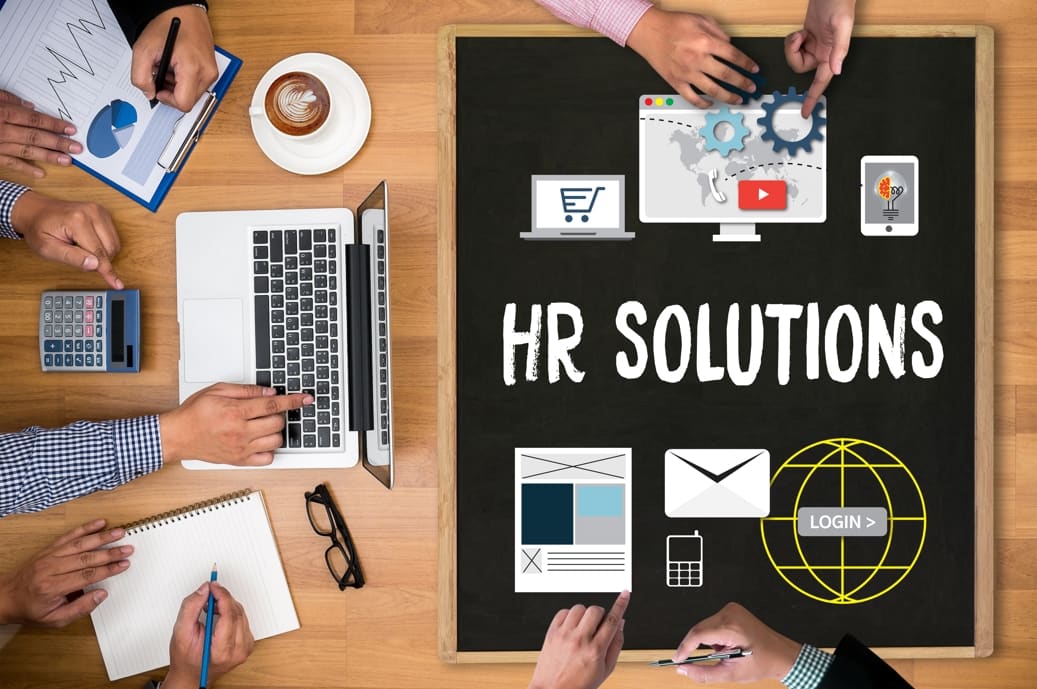Human Resources (HR) is no longer just about payroll and policy enforcement. It’s more about fostering meaningful relationships. From attracting top talent to nurturing employee engagement, HR teams are expected to act as strategic partners in organizational growth. But how do you efficiently manage hundreds of candidate interactions, track employee development, and maintain a thriving workplace culture? Enter CRM human resources—a game-changing fusion of traditional customer relationship management (CRM) tools and HR practices.
Historically, CRM systems have been the backbone of sales and marketing teams, streamlining customer interactions and driving loyalty. Today, forward-thinking HR departments are repurposing these tools to revolutionize talent acquisition, employee retention, and workforce analytics. Imagine a platform that centralizes every touchpoint—from a candidate’s first job application to their exit interview—while offering actionable insights to boost productivity and morale.
This article explores how CRM human resources is reshaping the employee experience, offering tools to turn fragmented HR processes into cohesive, data-driven strategies. Whether you’re struggling with high turnover or seeking to build a pipeline of future leaders, discover how CRM technology can empower your HR team to focus less on administrative chaos and more on what truly matters: people.
What is a CRM system
A Customer Relationship Management (CRM) system is a technology platform designed to manage and optimize interactions between an organization and its stakeholders—traditionally, customers. Originating in sales and marketing, CRM tools centralize data, automate workflows, and track interactions across communication channels like email, social media, and phone calls. At its core, a CRM system acts as a digital hub that houses critical information, such as contact details, communication histories, purchase behaviors, and feedback, allowing teams to deliver personalized experiences at scale.
CRMs are celebrated for their ability to streamline sales pipelines, nurture leads, and boost customer retention. For example, a sales team might use a CRM to log prospect meetings, schedule follow-ups, and forecast revenue based on deal stages. However, the flexibility of modern CRM software has expanded its applications far beyond customer-facing roles. With customizable fields, automation rules, and analytics dashboards, these systems are now being adapted to solve challenges in departments like HR—transforming how organizations manage human relationships rather than just customer ones.
In the context of CRM human resources, the same principles apply—but the focus shifts to employees, candidates, and internal stakeholders. Think of it as an “Employee Relationship Management” tool. Instead of tracking customer purchases, HR teams use CRM functionalities to monitor candidate journeys, streamline onboarding, gauge employee sentiment, and identify retention risks. By repurposing CRM technology, HR departments gain a holistic view of the workforce lifecycle, turning fragmented processes into interconnected, data-driven strategies.
From recruitment campaigns to offboarding exit interviews, a CRM system becomes the backbone of proactive talent management. The next section dives into how these tools unlock specific benefits for HR teams, turning administrative hurdles into opportunities for culture-building and growth.
How can human resources benefit from a CRM system?
The integration of CRM systems into HR—often dubbed “HRM-CRM”—transforms traditional people management into a strategic, data-driven function. By borrowing the precision and scalability of sales-focused CRM tools, HR teams can tackle everything from talent acquisition to retirement planning with unprecedented efficiency. Below, we break down the multifaceted advantages of CRM human resources, explaining how it reshapes every stage of the employee lifecycle.

Recruitment & talent acquisition
Traditional recruitment often drowns in spreadsheets, disjointed emails, and missed follow-ups. A CRM system brings order to this chaos by automating candidate pipelining. Track applicants across job boards, career sites, and referrals in a unified dashboard. Tag candidates by skills, experience, or cultural fit for quick filtering.
It also brings personalized communication. Use templates and automated triggers to send tailored updates, while maintaining a human touch.
Imagine this, A tech startup uses its CRM to segment candidates into “Junior Developer” or “Leadership” pipelines, automatically nudging recruiters to follow up with top prospects after 72 hours of inactivity.
A CRM system may also help reduce time-to-hire:. Analytics reveal bottlenecks in the hiring process (e.g., prolonged approval stages), while automated reminders keep hiring managers accountable. Use it to build a searchable talent pool: Store resumes, interview notes, and past interactions for future roles. Re-engage passive candidates from last year’s pool for new openings.
See SMO in action
Try our solutions with zero commitment
Onboarding
Poor onboarding costs companies productivity and increases early turnover. A CRM automatically assigns tasks like IT setup, benefits enrollment, and team introductions. New hires receive a personalized portal with pre-loaded training schedules, company policies, and a map of their first 90 days—all tracked and adjusted in real time.
Example: A retail chain uses its CRM to notify managers when a new cashier completes compliance training, triggering automatic scheduling for shadow shifts.
Employee retention & development
High turnover often stems from unrecognized dissatisfaction, stalled growth, or misalignment between employee expectations and organizational opportunities. A CRM system tackles these issues head-on by analyzing patterns such as declining engagement survey scores, frequent unplanned time-off requests, or gaps in promotion timelines. Machine learning algorithms flag at-risk employees, enabling HR to deploy proactive interventions like mentorship programs or tailored career conversations.
Beyond identifying risks, the system personalizes development by logging skills, certifications, and individual aspirations in employee profiles. It then suggests targeted training, lateral role opportunities, or cross-departmental projects to reignite motivation.
For instance, a marketing agency might use CRM analytics to identify a high-performing designer stuck in repetitive tasks, then assign them to an AI branding workshop to diversify their experience. Additionally, automated feedback loops—through pulse surveys, stay interviews, and performance check-ins—centralize responses into intuitive dashboards. This reveals systemic trends, such as burnout in a department or praise for inclusive leadership, equipping HR to address root causes rather than symptoms.
Employee engagement & internal communication
CRM tools revolutionize engagement by borrowing marketing principles like audience segmentation and personalized messaging.
HR teams craft hyper-targeted campaigns, such as SMS-based wellness invites for working parents or email drip campaigns promoting Excel training for finance staff. These strategies ensure employees receive relevant updates without inbox overload. Participation metrics—tracked via event RSVPs, e-learning course completions, or mentorship sign-ups—provide real-time insights into cultural health.
For example, a healthcare network using CRM-driven newsletters might A/B test subject lines for nurses (emphasizing shift flexibility) versus administrators (highlighting new tech tools), boosting open rates by 30%. This data not only refines communication strategies but also uncovers gaps in engagement, such as low participation in leadership programs among mid-level managers, prompting targeted outreach.
By treating employees as valued stakeholders with unique needs, organizations foster a culture of connection and belonging.
Performance management
CRMs replace annual review drudgery with continuous, data-backed insights:
Goal tracking: Log objectives and key results (OKRs) in employee profiles. Managers get alerts when progress stalls, enabling timely support.
Feedback centralization: Aggregate peer reviews, client praise, and project outcomes into a single timeline. This eliminates recency bias during promotions.
Example: A software company uses CRM data to correlate developers’ code deployment frequency with customer satisfaction scores, informing bonus allocations.
Skills gap analysis: Generate reports showing where teams lack critical competencies (e.g., cloud security expertise). HR then curates upskilling paths.
Succession planning & leadership development
CRMs turn succession planning from guesswork to science:
Talent profiling: Assign tags like “High-Potential” or “Subject-Matter Expert” to employees. Track leadership program participation, 360° feedback, and cross-functional project success.
Scenario modeling: Simulate leadership changes (e.g., “What if our CFO retires?”) to identify readiness gaps and accelerate development for backups.
Example: A financial services firm uses its CRM to track 50+ leadership candidates, assigning stretch assignments like mergers & acquisitions simulations to prepare them for C-suite roles.
Workforce analytics & reporting

CRMs transform raw HR data into actionable insights:
Real-time dashboards: Track metrics like retention rate, diversity ratios, time-to-productivity, and cost-per-hire.
Predictive modeling: Forecast turnover risks, seasonal hiring demands, or the impact of wellness programs on absenteeism.
Example: A manufacturing firm links CRM data to operational KPIs and discovers a 15% productivity drop in teams with >20% overtime. HR then revises scheduling policies.
Benchmarking: Compare internal metrics against industry standards to justify budget requests or policy changes.
Compliance & data security
HR-CRMs safeguard sensitive data while simplifying compliance:
Audit trails: Track who accessed an employee’s salary history or medical leave request, ensuring GDPR or CCPA adherence.
Automated document management: Flag expired certifications (e.g., forklift licenses) and auto-email renewal reminders.
Example: A multinational HR team uses CRM workflows to enforce region-specific policies, like auto-deleting temp worker data after EU contract periods expire.
Scalability & adaptability
Whether expanding globally or shifting to hybrid work, HR-CRMs scale effortlessly:
Custom workflows: Adapt the system for regional differences (e.g., varying parental leave policies) or departmental needs (sales vs. R&D).
Integration power: Sync with payroll software (ADP), learning platforms (LinkedIn Learning), and collaboration tools (Slack).
Example: A startup scaling into APAC uses its CRM to standardize hiring workflows across 5 countries while allowing local HR teams to customize benefit packages.
By integrating CRM systems, HR evolves from a transactional department to a strategic powerhouse. These tools automate repetitive tasks (e.g., resume screening, benefits reminders) while freeing teams to focus on high-impact work: mentoring leaders, analyzing culture trends, and designing equitable growth paths. The result? A workforce that feels valued, understood, and primed to drive long-term success.
See SMO in action
Try our solutions with zero commitment
The future of HR lies in relationship-centric technology
As the workplace evolves, human resources departments can no longer afford to rely on fragmented tools or reactive strategies. CRM human resources bridges the gap between data-driven efficiency and human-centric leadership, empowering HR teams to build lasting relationships with employees and candidates alike. By centralizing interactions, predicting risks, and automating repetitive workflows, CRM systems transform HR from a cost center into a strategic force that fuels organizational resilience and innovation.
The adoption of CRM technology isn’t just about keeping pace with trends—it’s a pivotal shift in how businesses value their people. When employees feel heard, supported, and aligned with their growth paths, companies reap the rewards of higher retention, stronger employer branding, and a culture that attracts top talent. Meanwhile, HR leaders gain the time and insights needed to focus on visionary initiatives, from diversity equity & inclusion (DEI) programs to leadership development.
Whether you’re a startup crafting your first talent strategy or an enterprise optimizing a global workforce, CRM tools offer the adaptability to meet tomorrow’s challenges. The question isn’t if your organization should integrate CRM into HR—it’s how quickly you can start.
Investing in relationships has always been the heart of HR. Now, with CRM systems, it’s also the science.


